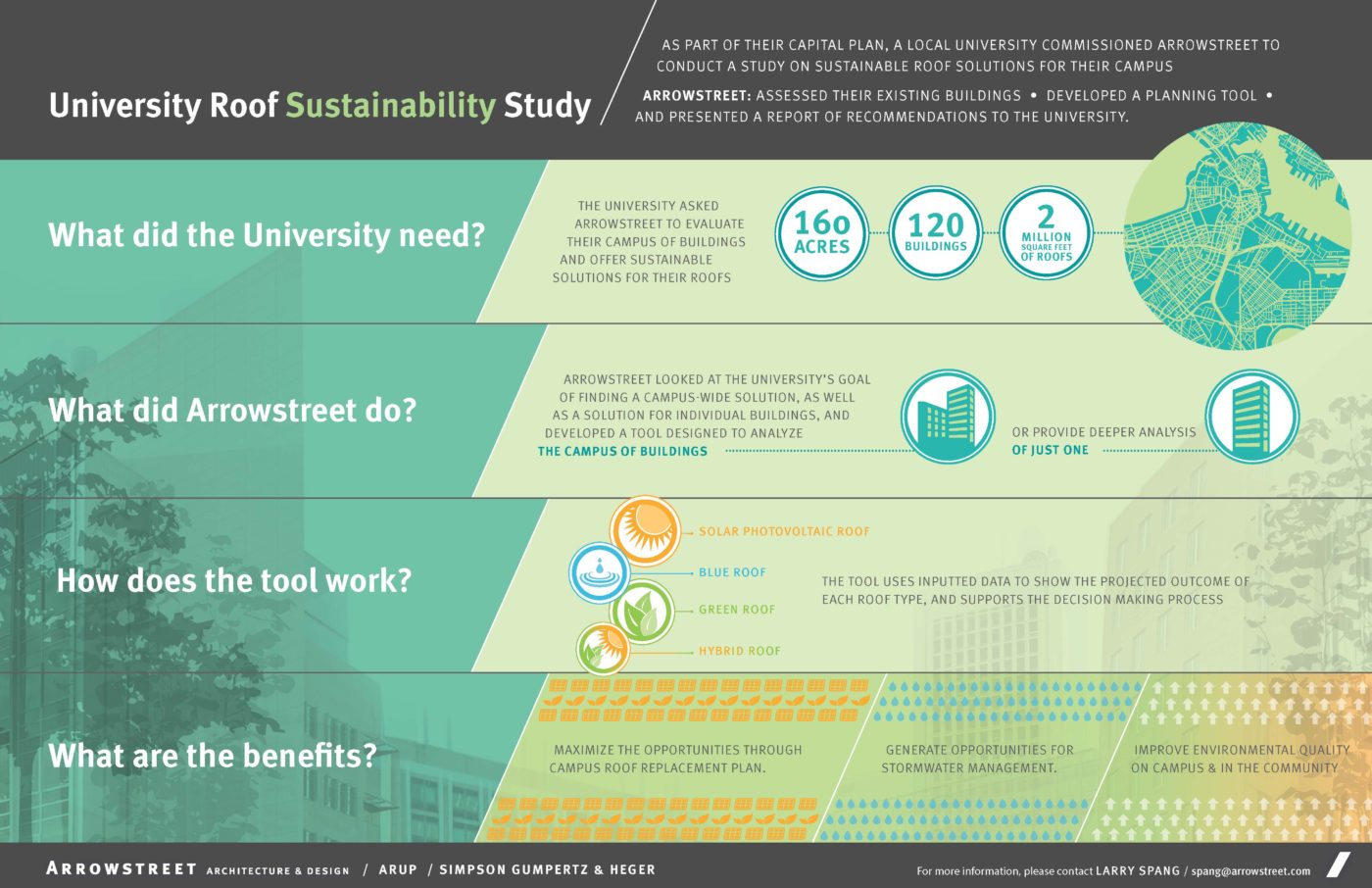


Reducing energy usage across campus
The study and planning tool allows MIT to develop campus plan strategies and prioritize improvements that lower greenhouse gas emissions, maximize energy savings, improve storm water management, increase biodiversity, reduce the urban heat island effect, increase energy production, and provide more educational/research opportunities.
Consistent with MIT’s Plan for Action on Climate Change that includes several initiatives focused on the goal of reducing campus carbon emissions by 32 percent by 2030, Arrowstreet was commissioned to perform a study and develop a tool that evaluates options for making MIT’s campus buildings more sustainable. The campus is 169-acres and is comprised of 133 buildings with more than 2.5 million square feet of roof area, over 42 percent of MIT’s land area. The project team included Arrowstreet, Arup, Simpson Gumpertz & Hager (SG&H), and PM+C.
To develop the tool, Arrowstreet and SG&H completed an existing conditions survey for 20 buildings chosen by MIT, evaluating the roof conditions and building structure. Incorporating the data into a database developed by Arup, the team created the Roof Sustainability Planner Tool. The tool includes a lifecycle cost analysis and gives a snapshot of cost and energy reduction. It also provides data for potential cost savings for each building (as determined by roof type). The information and tool outputs provides MIT with the information to assist in campus planning, capital improvement recommendations, and sustainability decisions. The tool is used by teams in MIT Campus Construction, Maintenance and Utilities, Campus Planning and Office of Sustainability and has become part of MIT’s workflow in decision making for their annual roof replacement program.
Arrowstreet’s team worked closely with the university to identify overall goals for creating sustainable roofs on MIT’s campus. Goals included: demonstrating MIT’s commitment to sustainability; educating the Institute and the public about the benefits of renewable energy generation; utilizing roofs to generate electricity; responding to the city’s efforts to mitigate flooding and temperature rise; and providing education and research opportunities
to the MIT community.
The Team worked with MIT to set goals and priorities for sustainable roofs. The analysis focused on integrating 5 priority issues:
Environment. Reduce carbon emissions, manage stormwater and peak flows, reduce heat island effects, reduce air pollution and enhance biodiversity resulting in a reduction of greenhouse gas emissions and energy use, and mitigation of urban heat island effects as well as stormwater management at the roof level to help protect the health of the Charles River.
Operations and Maintenance. Manage building operations through energy savings, renewable energy production, increased roof life and reduced maintenance.
MIT and Community Benefits. Visual benefits to occupants and adjacent buildings, usable space, historic preservation, educational benefits and agricultural benefits to support. institution’s academic program and research. Vegetated roofs will attribute to restoring natural habitats and increase biodiversity.
Existing Programs. MIT will prioritize and develop a Capital Renewal planning tool using Lifecycle Cost Analysis for their annual maintenance and utilities.
Regulatory Drivers. MIT’s project will seek ways to be consistent with the City of Cambridge, Massachusetts and Federal laws related to climate and sustainability plans and requirements.
Project Details
Location
Cambridge, MA
Categories
Sustainability, Institutional
Team
Awards
BSA Design Award in Campus and Urban Planning
CITATION AWARD, 2019
SCUP Excellence in Planning for an Existing Campus
HONOR AWARD, 2018


